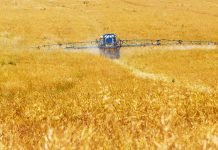Pesticide residues have become a growing concern in our food supply, impacting both consumer health and agricultural sustainability.
This article aims to explore the prevalence of pesticide residues in our food, the associated health risks, and the measures taken to regulate and reduce their presence.
By understanding the impact of pesticide residues from farm to fork, we can make informed decisions about our food choices and promote a safer and more sustainable food system.
Key Takeaways
- Pesticide residues are widespread in our food supply, leading to increased consumer awareness and demand for stricter regulations for food safety.
- Pesticide residues on fruits, vegetables, grains, and animal products can potentially have long-term health effects, including cancer, reproductive problems, neurological disorders, and hormone disruption.
- Pesticide residues not only harm human health but also disrupt ecosystems, negatively impacting crop sustainability.
- Regulatory measures, such as setting residue limits and implementing traceability systems, are crucial for controlling pesticide residues and protecting the environment and human health.
The Prevalence of Pesticide Residues in Our Food
A significant number of studies have shown that pesticide residues are widely present in our food supply. The prevalence of pesticide residues in our food is a growing concern that has gained consumer awareness in recent years.
Consumers are becoming more conscious about the potential risks associated with consuming food that contains pesticide residues. Pesticides are used in agricultural practices to protect crops from pests and diseases. However, these chemicals can leave residues on the crops, which can then be transferred to the food we consume.
The presence of pesticide residues in our food raises concerns about the potential health effects they may have on consumers. As a result, consumers are demanding more transparency and stricter regulations to ensure the safety of our food supply.
Health Risks Associated With Pesticide Residues
The presence of pesticide residues in our food raises concerns about the potential health risks associated with their consumption. While pesticide residues are found in varying levels in our food supply, it is important to understand the potential long-term effects they may have on our health. Here are three key points to consider:
- Contamination levels:
Pesticide residues can be found on fruits, vegetables, grains, and animal products. The levels of contamination vary depending on factors such as farming practices, pesticide usage, and regulatory standards.
- Potential long-term effects:
Research suggests that exposure to pesticide residues may be linked to various health issues, including cancer, reproductive problems, neurological disorders, and hormone disruption. However, the long-term effects are still being studied, and more research is needed to fully understand the risks.
- Cumulative exposure:
It is important to consider the cumulative exposure to pesticide residues from various food sources over time. Even low levels of exposure can add up and potentially impact our health in the long run.
Impact of Pesticide Residues on Crop Sustainability
Pesticide residues can jeopardize the sustainability of crops, as they can negatively impact soil health and disrupt the delicate balance of ecosystems.
Crop contamination occurs when pesticide residues remain on the plants after application, leading to potential harm to both human health and the environment.
These residues can accumulate in the soil over time, affecting its fertility and reducing the overall productivity of the crops.
Additionally, the environmental consequences of pesticide residues include the contamination of water sources, harming aquatic life and potentially affecting the entire food chain.
It is crucial to address these issues to ensure the long-term sustainability of crop production.
Regulatory measures to control pesticide residues in food play a vital role in minimizing these risks and protecting both the environment and human health.
Regulatory Measures to Control Pesticide Residues in Food
To effectively control pesticide residues in food, regulatory measures must be implemented to ensure the safety and quality of our food supply. These measures include:
- Regulatory compliance: Government agencies and regulatory bodies play a crucial role in establishing and enforcing regulations related to pesticide residues. They set standards and guidelines for pesticide use, residue limits, and maximum residue levels (MRLs) that must be adhered to by farmers, food processors, and distributors.
- Testing methods: To monitor and assess pesticide residues in food, various testing methods are employed. These methods involve analyzing samples of food products for the presence and concentration of pesticide residues. Advanced technologies such as chromatography and mass spectrometry are used to detect and quantify these residues accurately.
- Traceability systems: Implementing traceability systems is essential to track the movement of food products from the farm to the consumer. These systems enable identification and documentation of the origin, handling, and processing of food products, allowing for effective monitoring of pesticide residue levels and ensuring compliance with regulations.
Steps to Reduce Pesticide Residues in Our Food Supply
In order to effectively reduce pesticide residues in our food supply, it is crucial to implement strategic measures and practices.
One such measure is the adoption of organic farming methods. Organic farming avoids the use of synthetic pesticides and instead focuses on natural pest control methods, such as crop rotation, use of beneficial insects, and composting. By eliminating the use of pesticides, organic farming significantly reduces the risk of pesticide residues in our food.
Another important practice is the implementation of integrated pest management (IPM) strategies. IPM involves the use of a combination of techniques, such as biological control, crop rotation, and targeted pesticide application, to minimize the use of pesticides and prevent pest outbreaks. By integrating various pest control methods, IPM helps to reduce pesticide residues while maintaining crop yields and protecting the environment.
Conclusion
In conclusion, pesticide residues pose a significant threat to our food supply and human health. The prevalence of these residues in our food raises concerns about the safety and sustainability of our crops.
Regulatory measures are in place to control pesticide residues, but more steps need to be taken to reduce their presence in our food supply.
It is crucial to prioritize sustainable farming practices and alternative pest control methods to ensure a safe and healthy food system for future generations.
Please see our supporting articles:
Pesticides and Our Food: Are We Putting Ourselves at Risk?
Childhood Development at Risk From Pesticides
With regard to:
The Prevalence of Pesticide Residues in Our Food.
- University of Maryland
- Article: Toxic Pesticides on the Rise in Our Food
- This research discusses the prevalence of neonicotinoids, a class of toxic insecticides, in the U.S. food supply and their increasing rates of detection in recent years.
- Harvard University
- Article: Pesticide Residues in Fruits and Vegetables: Assessment and Their Associations With Reproductive Health Outcomes
- This dissertation discusses the associations between pesticide residues in fruits and vegetables and reproductive health outcomes.
- University of Minnesota
- Article: Public health risks associated with pesticides and natural toxins in foods
- This article discusses the public health risks associated with various pesticides and natural toxins present in foods.
- FDA (U.S. Food and Drug Administration)
- Article: Chapter 1 – FDA
- This chapter from the FDA discusses the incidence and level of pesticide residues in the food supply.
- European Food Safety Authority (EFSA)
- Article: The 2019 European Union report on pesticide residues in food
- This report provides a comprehensive analysis of the 2019 pesticide residues data reported by EU Member States.
These sources offer a wealth of information on the subject, providing various perspectives and findings related to pesticide residues in food.



